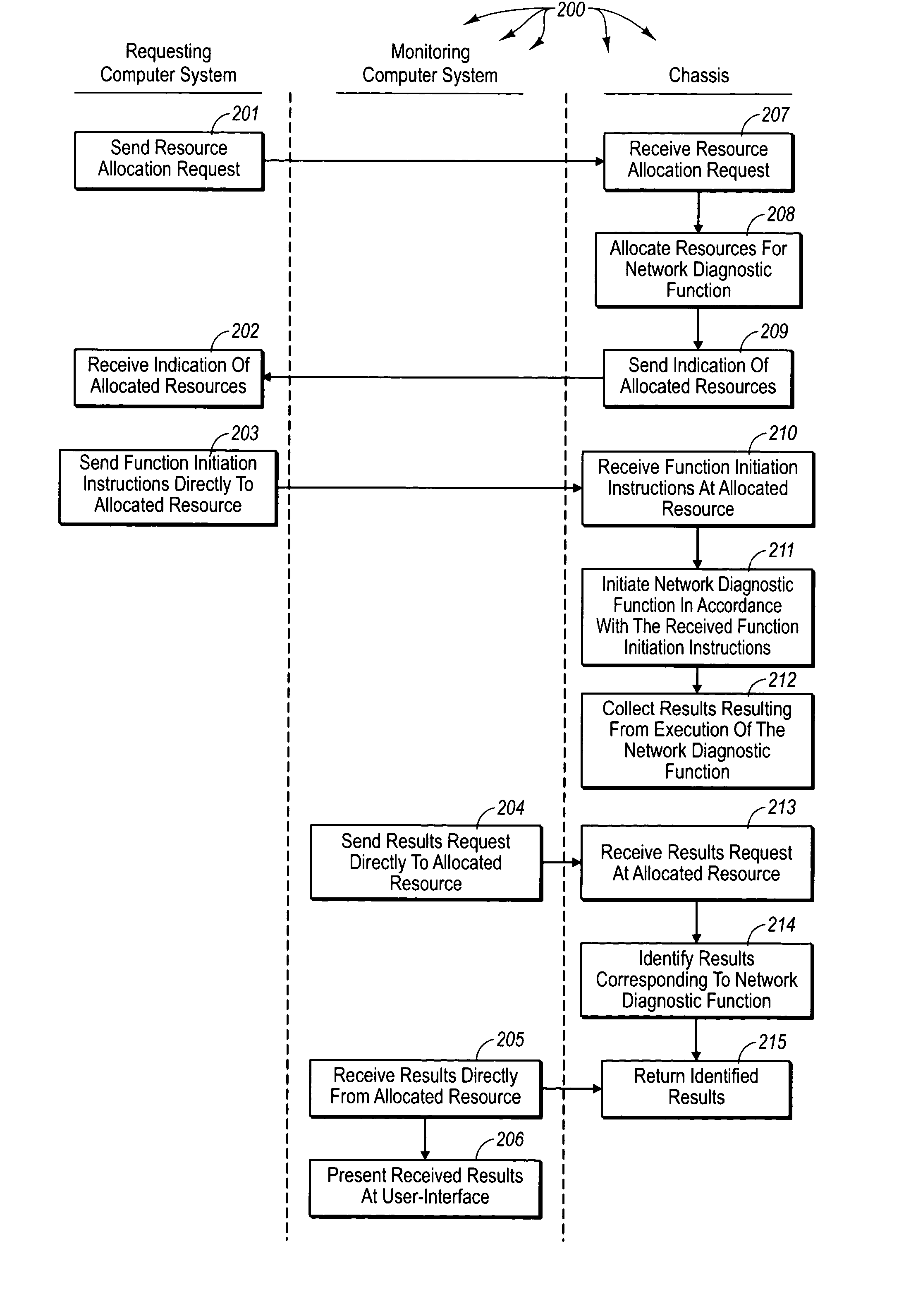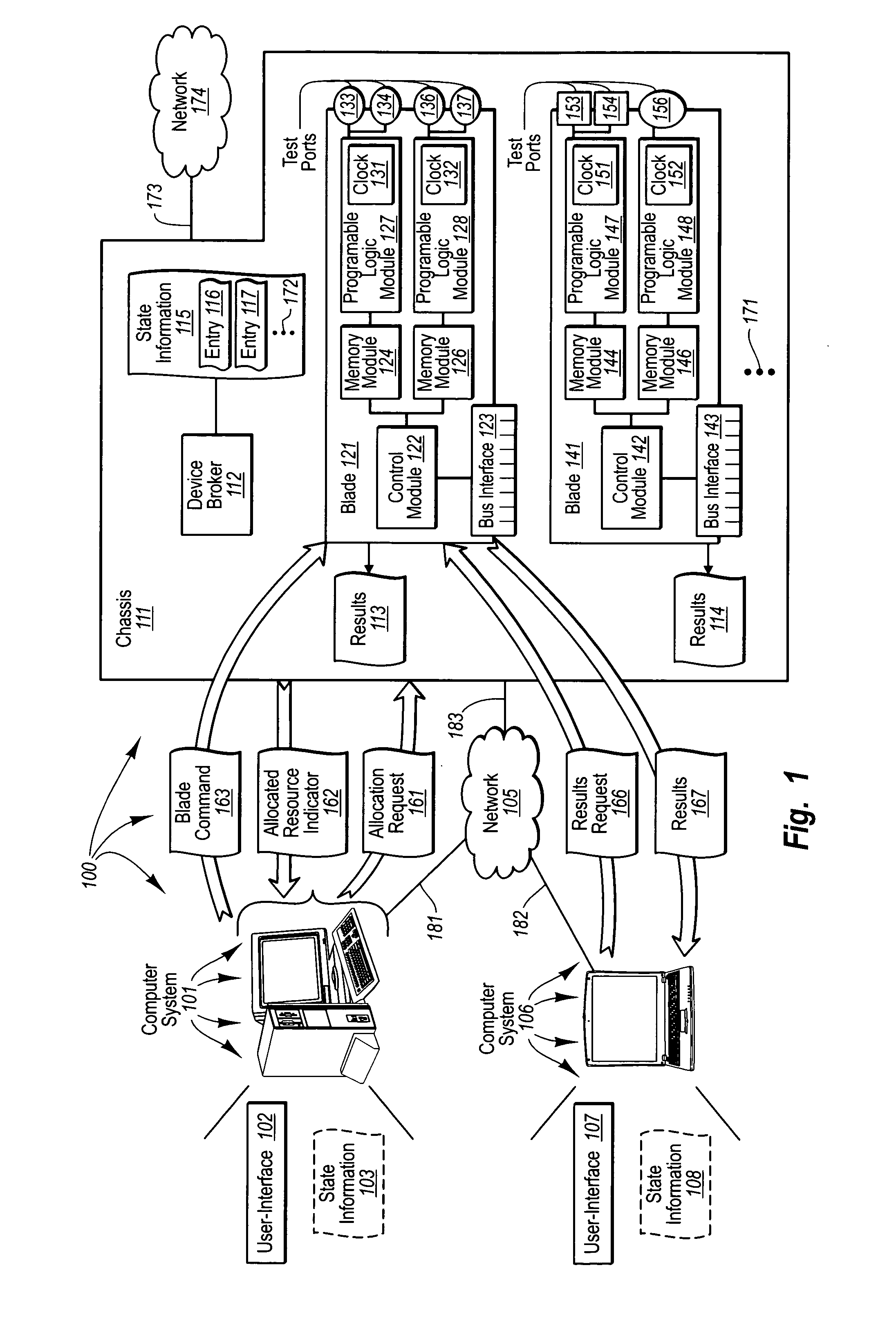Accessing results of network diagnostic functions in a distributed system
a distributed system and network diagnostic technology, applied in the field of network testing, can solve the problems of network communication, general experience, and large communication bandwidth demand, and achieve the effect of increasing flexibility
- Summary
- Abstract
- Description
- Claims
- Application Information
AI Technical Summary
Benefits of technology
Problems solved by technology
Method used
Image
Examples
Embodiment Construction
[0031] The principles of the present invention provide for accessing results of network diagnostic functions in a distributed system. A chassis contains one or more network diagnostic modules. In some embodiments, network diagnostic modules can include one or more programmable logic modules (e.g., one or more Field Programmable Gate Arrays (“FPGAs”)) with circuitry for implementing any of a plurality of different network diagnostic functions (e.g., network analyzer, jammer, generator, bit rate error test, etc). Each programmable logic module controls one or more test ports that provide interfaces for different physical configurations (e.g., Gigabit Ethernet, Fiber Distributed Data Interface, Fiber Channel, etc.) and that can interoperate with the programmable logic module to implement a selected network diagnostic function. It may be that a network diagnostic module is included in a printed circuit board (hereinafter referred to as a “card” or “blade”) that is inserted into an appro...
PUM
 Login to View More
Login to View More Abstract
Description
Claims
Application Information
 Login to View More
Login to View More - R&D
- Intellectual Property
- Life Sciences
- Materials
- Tech Scout
- Unparalleled Data Quality
- Higher Quality Content
- 60% Fewer Hallucinations
Browse by: Latest US Patents, China's latest patents, Technical Efficacy Thesaurus, Application Domain, Technology Topic, Popular Technical Reports.
© 2025 PatSnap. All rights reserved.Legal|Privacy policy|Modern Slavery Act Transparency Statement|Sitemap|About US| Contact US: help@patsnap.com



